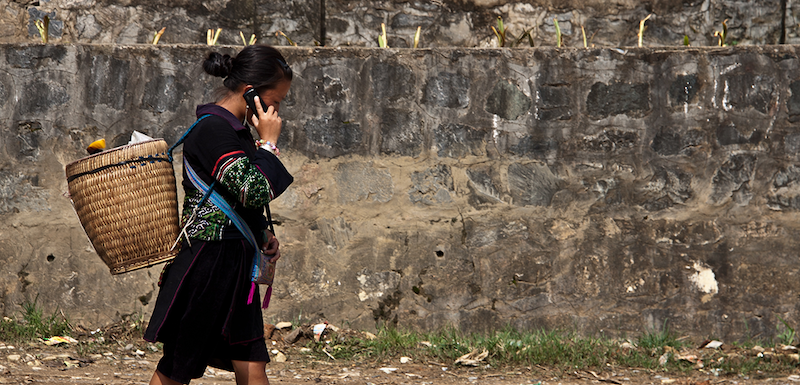
JMIR Publications published “Measuring the Burden of Infodemics: Summary of the Methods and Results of the Fifth WHO Infodemic Management Conference” in the journal JMIR Infodemiology, which reported that the COVID-19 pandemic has been accompanied by an unprecedented global infodemic that has led to confusion about the benefits of medical and public health interventions, with substantial impact on risk-taking and health-seeking behaviors, eroding trust in health authorities and compromising the effectiveness of public health responses and policies.
In this paper, the authors summarize the Fifth World Health Organization (WHO) Infodemic Management Conference structure, proceedings, outcomes, and proposed actions seeking to identify the interdisciplinary approaches and frameworks needed to enable the measurement of infodemic burden.
The 5 key areas for the development of metrics to assess the burden of infodemics and associated interventions included:
- Developing standardized definitions and ensuring the adoption thereof
- Improving the map of concepts influencing the burden of infodemics
- Conducting a review of the evidence, tools, and data sources
- Setting up a technical working group
- Addressing immediate priorities for postpandemic recovery and resilience building
Tina D Purnat from the World Health Organization, who is the first author on the paper said, “An infodemic is excess information of varying quality, including false/misleading information or ambiguous information or both, that spreads in digital and physical environments during a health emergency. Measuring the impacts of infodemics on the information ecosystem, individual level effects, as well as on health system and society are key to pave the way for effective policies to mitigate harm from infodemics.”
There are several key concepts that are integral to discussing infodemics and how they link to health authority responses, including the online and offline information environment:
- The channels, formats, and quality of health information people are exposed to
- Individual-level literacy
- The psychology of emergencies
- Designed information ecosystem(s) that impact cognitive and interpersonal dynamics of information access, seeking and information-related and heath behavior
- The multifaceted aspects of trust and how they influence perception and behavior in health
Ms Purnat and the other researchers concluded in their JMIR Publications Research Article that when definitions are set, formulating an adequate methodology—relevant in various health care settings and contexts—can be pursued that helps measure and eventually express the damaging effects of infodemics by using standard indicators. Yet, they need further research and innovation to address some of the long-standing questions and bring about a truly multidisciplinary effort that serves both academic research and public health emergency preparedness, prevention, and response.
About JMIR Infodemiology
Infodemiology is the study of the distribution and determinants of information and misinformation about a particular topic, using computational methods to analyze and interpret digital data sources such as search engines, social media, and online news platforms.
The term infodemiology was coined in 2002 by Gunther Eysenbach, a researcher and ehealth expert at the University of Toronto, who called for a new scientific discipline to study the “epidemiology of (mis)information” and to investigate “determinants and distribution of health information and misinformation—which may be useful in guiding health professionals and patients to quality health information on the Internet”. Since then, the field has expanded to encompass a wide range of topics, including politics, finance, and environmental issues. WHO has applied infodemiology and other disciplines to the practice o finfodmeic management, a multilevel, multisectoral and whole-of-society approach to managin harms from infodemics. The term gained renewed popularity when the World Health Organization declared an “infodemic” accompanying the COVID pandemic, and the term was also recently included into the medical subject headings catalog of the US National Library of Medicine.
Infodemiology seeks to understand how information spreads through online networks, how it affects people’s attitudes and behaviors, and how it can be used to improve public health, policy-making, and other domains. It draws on a range of data analysis techniques, including natural language processing, machine learning, and network analysis, to extract insights from large volumes of digital data.
The journal JMIR Infodemiology is the first and leading journal covering this emerging multidisciplinary field.
###
DOI – https://doi.org/10.2196/44207
Full-text – https://infodemiology.jmir.org/2023/1/e44207/
Corresponding Author – Tina D Purnat, MSc, Department of Epidemic and Pandemic Preparedness and Prevention, World Health Organization, Avenue Appia 20, Geneva, CH
Phone – 41 22 791 21 11
Email – purnatt@who.int
Keywords – COVID-19, infodemic, burden of infodemic, infodemic management, infodemic metrics, World Health Organization, technical consultation, infodemiology
JMIR Publications is a leading, born-digital, open access publisher of 30+ academic journals and other innovative scientific communication products that focus on the intersection of health and technology. Its flagship journal, the Journal of Medical Internet Research, is the leading digital health journal globally in content breadth and visibility, and it is the largest journal in the medical informatics field.
To learn more about JMIR Publications, please visit https://www.JMIRPublications.com or connect with us via:
YouTube – https://www.youtube.com/c/JMIRPublications
Facebook – https://www.facebook.com/JMedInternetRes
Twitter – https://twitter.com/jmirpub
LinkedIn – https://www.linkedin.com/company/jmir-publications
Instagram – https://www.instagram.com/jmirpub/
Head Office – 130 Queens Quay East, Unit 1100 Toronto, ON, M5A 0P6 Canada
Media Contact – Communications@JMIR.org
The content of this communication is licensed under the terms of the Creative Commons Attribution License (https://creativecommons.org/licenses/by/4.0/), which permits unrestricted use, distribution, and reproduction in any medium, provided the original work, published by JMIR Publications, is properly cited.
